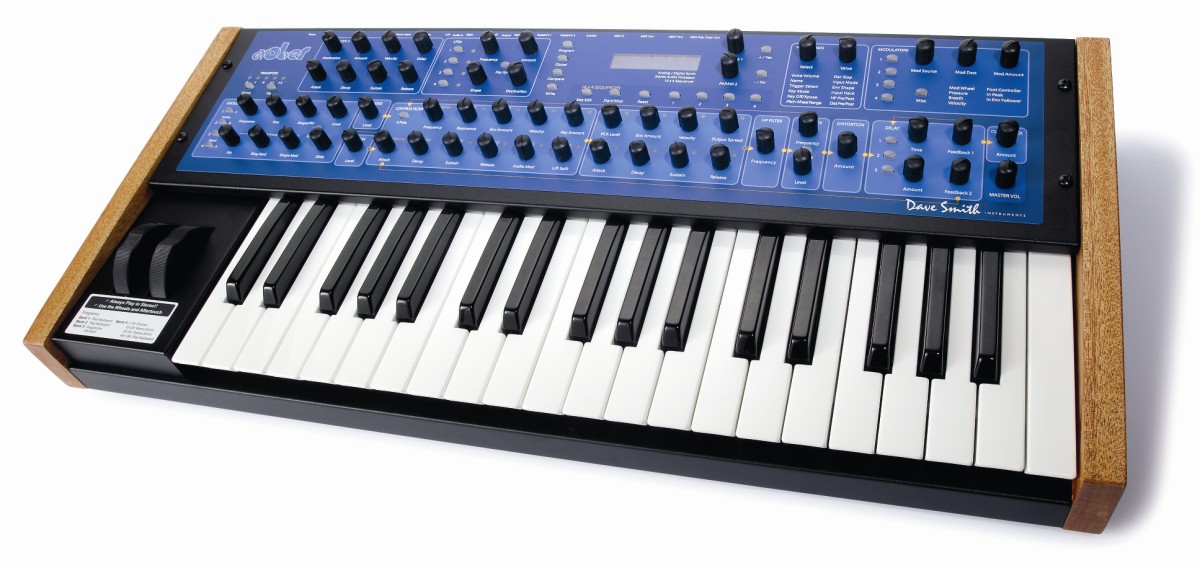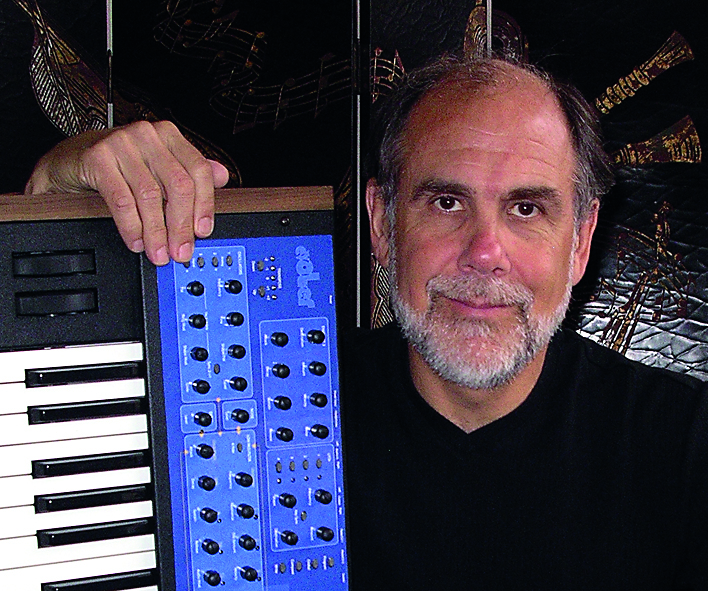MusicRadar Verdict
A great-sounding, super-playable synth from a synthesis giant. Dear Santa…
Pros
- +
Hundreds of programs. Wonderful sound. Very versatile.
Cons
- -
May be too pricey for some.
MusicRadar's got your back



Fashions come, fashions go. As computer processing speeds increase and more soft synths and effects plugins hit the shelves every day at lower prices, the natural course of events would suggest that before long we´ll be using all the tools we need from within a power-house Mac or PC.
But there's still a place for hardware. Whether it´s because a growing number of users are disappointed by the comparative lack of weight of sound in some soft synths, or perhaps because synths were designed to be played rather than mouse-operated, there are clearly those who feel tempted to start filling their studios with boxes again.
Helping hardware fans get their fix is Dave Smith, the erstwhile brain of Sequential Circuits who's been developing his Evolver range of instruments for some time. So, what does the Mono Evolver Keyboard bring to the table?
Sexy
The Evolver is a stereo monosynth festooned with front-panel knobs in classic retro synth tradition. It joins the Poly Evolver and the Evolver Rack in Dave Smith´s product list and can be ‘chained´ to be compatible with both.
The man himself speaks enthusiastically on his website about the inspiration behind Evolver and of his collaboration with Roger Linn (on the Adrenalinn) that rekindled his desire to start building hardware again. It seems that this, coupled with hundreds of requests for him to remake his Sequential Circuits classics for the 21st century, finally persuaded him to get back in the lab.
And you'll be glad he did. Any hardware synth designed to play one note at a time in this day and age has got to have a pretty decent sound engine up its sleeve, and the Evolver doesn´t disappoint. You´ll find it stacked with 512 onboard synth programs that ooze charm and seem to manage to be retro and futuristic at the same time. The leads cut through any mix, the basses range from warm to solid to speaker-busting, and the arpeggiated sounds bubble and sparkle and wibble and wobble. If you´re a synth purist, this is one for your notebook. So how is it all put together?
Want all the hottest music and gear news, reviews, deals, features and more, direct to your inbox? Sign up here.
Oscillators
At a glance, it´s clear that the Evolver keyboard is made from traditional subtractive synthesis elements. A quick scan of the front panel reveals dedicated oscillator, filter and amplifier sections, the latter two of which house their own envelope controls.
Alongside all of this, the LFO section seems immediately generous, with four separate modulators lying in wait here. However, this is merely an overview. While the Evolver Keyboard is a true monosynth, it features four oscillators per voice: two analogue, two digital. The analogue waveforms draw from a pool of sawtooth, triangle and pulse (PWM) waveforms, with a fourth providing a mix of sawtooth and triangle. Oscillators three and four are digital and act as waveshapers.
There are 128 of these in total, and 95 of them directly correspond to waveshapes found in the original Prophet-VS. Suffice to say that everything is possible here, from FMtype clangs, to Ring Mod effects and crunchy digital distortion. Coupled with the warm analogue oscillators, this is one hell of an engine.
One great feature is that each oscillator can be solo´d, so that complex factory patches can be stripped back and deciphered. The analogue filter section is actually constructed from two dedicated filters: one for each of the left and right channels. While these track one another, the idea is that the analogue nature of the processors will throw up tiny anomalies, which in turn help to provide a warm, true analogue sound. And the filter sounds wonderful.
A particularly satisfying feature is that when you're cranking resonance and tweaking cutoff the sound filters evenly from top to bottom. So many synths only provide a lively change in timbre in the middle of the cutoff dial, leaving a big ‘space´ at the top and bottom. The Evolver is different, and this is hugely to its credit.
The amplifier section is a real VCA and one nice feature here is that the output pan can be modified so that the left and right outputs can be reversed. As this is a parameter that can be modulated, you can effectively have your sound panning within itself, with independent oscillators crossing back and forth.
'Moving'
Dave Smith´s ethos has always been to get sounds ‘moving´. Don´t forget that this is the man who gave us the Prophet-VS and its joystick, and later the Wavestation and its related technology. With this in mind, it´s not a surprise to see so many modulator possibilities for the Evolver, starting with the four LFOs. These can affect pretty much everything. There are 68 destinations, including the other LFOs if you want. You could use LFO one to open and close LFO two, which in turn could control, for instance, delay time. The result is (like a cascading series of busses) very flexible and capable of some great results.
In case that´s not enough for you, the Keyboard Evolver features a dedicated ‘Modulators´ section, where a further four sources are available for you to get busy with your sound. This lets you configure the pitch and mod wheels to control whatever you like, for example, or to route those LFOs to further sources if you really want to take your program to pieces.
An additional feature of note is that it´s worth squeezing after-touch on every factory sound. Mr. Smith clearly takes this controller seriously, as you´ll find many of the shipped sounds spin off into unlikely places when the keys are pushed in anger.
Effects
Once you´ve made your patch the whole sound can be passed through the Keyboard Evolver´s delay section. This is no cursory addition: three delays lie in wait, with independent time and amount settings so that you can produce fully fl
edged multi-tap effects if you so desire.
Then, just before the master out control, you´ll find ‘audio hack´. This is effectively a digital bit-crusher that can be dialled in and out to your heart´s content to dirty up the sound, if that´s your thing. If it isn´t yet, it soon will be. The Evolver is capable of doing such a wide range of things to the onboard oscillators that it´s great to discover it also features a pair of audio ins for you to apply all that control to external sound sources. Connect your sound source, select one of the dedicated input programs and you´re off.
Physical
Having an instrument like the Evolver reminds you how great it is to have a physical synth in your studio - its sound, its feel, its immediate controllability. That said, it´s almost worth considering hardware synths in a category of their own - £850 for a box that can play one note at a time won´t be everyone´s immediate priority.
However, if you have the means, an Evolver test drive should be on your priority list, because this synth sounds unique and will certainly give your production work an edge and depth you´ll struggle to achieve with an allsoft suite of synths.
MusicRadar is the number 1 website for music makers of all kinds, be they guitarists, drummers, keyboard players, djs or producers...
GEAR: We help musicians find the best gear with top-ranking gear round-ups and high- quality, authoritative reviews by a wide team of highly experienced experts.
TIPS: We also provide tuition, from bite-sized tips to advanced work-outs and guidance from recognised musicians and stars.
STARS: We talk to musicians and stars about their creative processes, and the nuts and bolts of their gear and technique. We give fans an insight into the actual craft of music making that no other music website can.
